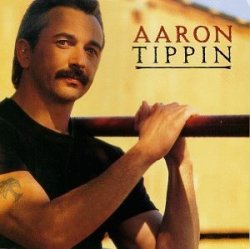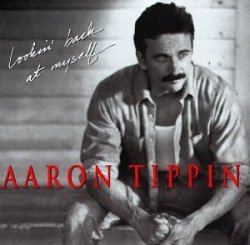 Released in February 1998, Ain’t It The Truth was Daryle’s third, and most successful album release, reaching #18 on Billboard’s Country Albums chart, his only album to crack the top forty. This seems strange in that Daryle’s days of producing hit singles were over. There were three singles released from this album, only one of which cracked the top thirty country singles.
Released in February 1998, Ain’t It The Truth was Daryle’s third, and most successful album release, reaching #18 on Billboard’s Country Albums chart, his only album to crack the top forty. This seems strange in that Daryle’s days of producing hit singles were over. There were three singles released from this album, only one of which cracked the top thirty country singles.
Despite the lack of singles success, this is a really fine country album with a cast of stalwart country musicians plying their trade on the album, headed by the following:
Larry Byrom – acoustic guitar, electric guitar
Joe Chemay – bass guitar
Larry Franklin – fiddle
Paul Franklin – dobro, steel guitar
Sonny Garrish – steel guitar
Steve Gibson – acoustic guitar, electric guitar, mandolin
John Hobbs – keyboards, synthesizer
Dann Huff – bass guitar, electric guitar
The album opens up with “The Note” a fine song that had been recorded by the likes of Conway Twitty, Tammy Wynette and Doug Supernaw before Daryle got around to releasing the song as a singleDaryle’s version reached #28 on the Country chart but also reached #90 on Billboard’s Hot 100.
The note was short, but lord so strong
It simply said I can’t go on
And live a lie with someone I don’t love
She couldn’t tell me face to face
Oh, but how my world was changed
By the hand that held the pen
That wrote the words that broke the heart
Of the one the only one that really loves her
My tears fell down like falling rain
But they can’t wash away the pain
How will I go to sleep without her in my arms
She never meant to break my heart
Oh,but how my world was torn apart
By the, hand that held the (f) pen
That wrote the words that broke the heart
Of the one the only one that really loves her
This is followed up by “Love or the Lack Of” by Mary Ann Kennedy and Rich Wayland, a mid-tempo ballad of what life really is about.
Jeff Crossan’s “That’s Where You’re Wrong” is a nice ballad, sung well by Daryle, and serves this album well by keeping the tempos on the album mixed. I don’t think the song had real potential as a single but it was released as the second single on the album, just cracking the top fifty.
You said, what you had to say, would come as a surprise
You were right, honey, you were right
You told me, nothing I could do was gonna change your mind
I knew then, you’d be right again
But, when you said we were through, I knew that wasn’t true
[Chorus]
That’s where you’re wrong, that’s where you’re wrong
Deep down inside love lingers on, it won’t let go, it’s still too strong
That’s where you’re wrong
Daryle was never timid about tackling classic country ballads, and in Jerry Reed’s “A Thing Called Love” he has picked a good one. The song was originally released as a single by Jimmy Dean back in 1968 (still my favorite version of the song), taken to #1 (Record World) in 1972 by Johnny Cash, and covered by countless artists as an album track. Daryle gives this mid-tempo ballad a straight-ahead country treatment that does credit to the song.
Dwayne Blackwell’s rather tongue-in-cheek “I’d Live For You” would have made an excellent single:
I won’t climb the highest mountain I won’t swim the deep blue sea
I won’t brave a raging river I’m no hero on TV
Well there are other ways to prove my love if you’re not too choosy
I’d swim the deep blue swimming pool climb the highest barroom stool
Brave the raging waters of a hot tub or Jacuzzi
Honey I’d live for you that’d be a lot more fun
Work and give to you vacations in the sun
No I wouldn’t die for love like the poets say they’d do
I love you so much honey I’d live for you
“A Miracle In The Making” finds Daryle as a duet partner with Kerry Singletary (now Kerry Harvick), his then- wife. Kerry’s not a bad singer, her voice somewhat reminiscent of Dolly Parton and I think this recording would have made a decent single
So I’m told it happens every day
Common as a wedding in the month of May
It’s something my heart won’t soon forget
There was nothing ordinary in that moment we met
We may not have seen the sea parted
We may not have tasted water turned to wine
And it may not appear all that earth shaking
Oh but I believe we could be a miracle in the making
Delbert McClinton’s “My Baby’s Lovin’ “ was the third and final single released from the album, reaching #44. Mc Clinton is a fine song-writer wih a bit of a bluesy touch to his ballads. This song is taken at a medium fast tempo and I’m surprised that it did not chart better.
The album closes with two songs on which Daryle has co-writing credit. “The Real Deal” is a good up-tempo song about the state of the narrator’s love (‘it’s the real deal’), whereas the title track is a ballad that pays homage to past country classics. I love the song, it definitely tells it like it is for Singletary and it would have made a great single. The track received some airplay here in Central Florida.
Born in this country red white and blue
From church pews to bar stools it’s always been true
From up in the mountains way back in the pines
From Crazy to Sweet Dreams to Yesterday’s Wine
All of my heroes from Lefty to Jones
Some are still with us and some have gone home
Oh precious are the memories of the music they made
Forever living not held by the grave
Forever and Always Chiseled in Stone
Like honky tonk prophets their words linger on
If you don’t believe me if you need some proof
Ask any old jukebox hey ain’t it the truth
Honest and simple never ashamed
Lord help us Jesus never to change
One day I’ll see Lefty when my work is through
He’ll say son you were country oh ain’t it the truth
Forever and Always Chiseled in Stone…
Ask any old jukebox hey ain’t it the truth
I really like this album, and I play it with some regularity – I actually had been listening to the album the week before Daryl’s death. I’d call it a solid “A”



 In 1982, The Dirt Band, as they were then known, reverted back to their former name and moved toward a more mainstream country sound. They scored their first Top 10 country hit in 1983 with “Dance Little Jean”. A year and a label change later, they solidfied their reputation as a mainstream country band with all of their singles through the end of the decade reaching the Top 10.
In 1982, The Dirt Band, as they were then known, reverted back to their former name and moved toward a more mainstream country sound. They scored their first Top 10 country hit in 1983 with “Dance Little Jean”. A year and a label change later, they solidfied their reputation as a mainstream country band with all of their singles through the end of the decade reaching the Top 10. 

